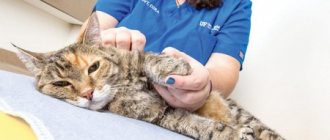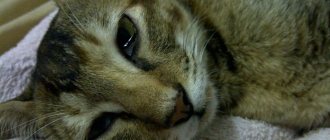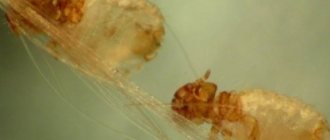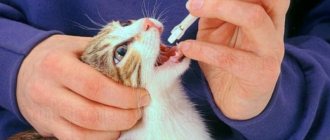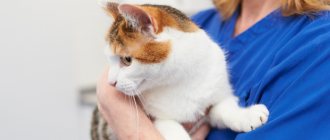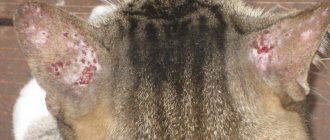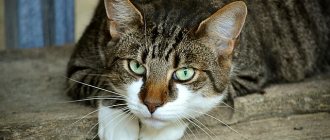Polycystic kidney disease in cats is a hereditary disease in which there is a proliferation of fluid-filled cysts in the animal's kidneys. Certain breeds of cats are predisposed to this disease. This pathology affects two kidneys at once, resulting in a decrease in the quality of blood purification by infected organs.
Polycystic kidney disease - what is it?
Polycystic disease is a disease in which a large number of cavities filled with fluid (cysts) form in the kidneys. With this pathology, the part of the organ that is affected becomes a vesicular formation. Polycystic disease simultaneously affects both kidneys, disrupting their functions.
As a result, they cease to cope with their main task - filtering. Harmful components accumulate in the body, causing intoxication. Sooner or later, polycystic disease leads to kidney failure and other dangerous consequences.
Most often, polycystic disease manifests itself clearly between the ages of 3 and 10 years. In more than 90% of cases, it is diagnosed in 7-year-old cats. Until this age, the disease is not so noticeable, since the size of the kidney remains normal and does not cause suspicion. Often similar cysts can be detected not only in the kidneys, but also in other internal organs (for example, in the liver).
Varieties
There are the following types indicated in the table:
| Classification | Description |
| Single (large cystic ovary) | From 1 to 2 cavities are formed |
| Multiple (small cystic) | More than 3 formations in the body |
| Follicular | Common type of disease in cats |
| Several formations are formed consisting of hormonal tissues that are capable of producing hormones | |
| Luteal | Rarely found in domestic cats |
| A single bleb of connective tissue is observed |
Based on the quality of the contents, the formation may be mucinous.
The classification depends on the cause of the pathology. Depending on the location, peripheral and central structures are distinguished. Veterinarians distinguish between functional and organic cysts. The first type occurs due to hormonal imbalance and can disappear on its own without treatment. Organic ones are extremely dangerous for the health of the animal, as they are prone to rapid growth. They also find cystomas - these are tumors that look similar to a cyst.
There are 2 types of formations based on the contents of the bubble:
- Mucinous. The surface is bumpy, there is a thick liquid inside.
- Serous. It contains a large number of chambers that lead to polycystic disease.
Causes of the disease
The only reason that can trigger the development of polycystic kidney disease is heredity. This is due to the fact that a specific gene (PKD-1) responsible for protein synthesis mutates. It is transmitted to the kitten from its mother or father and is present in its body from birth. All this leads to the formation of a gradually growing cyst.
Cat breeds that are at risk:
- Persian,
- British,
- Himalayan,
- exotic shorthair.
Main features
Polycystic disease is a slowly progressive disease. Numerous, but small cysts are present already at the birth of a kitten. Gradually they enlarge, replacing healthy kidney tissue and putting pressure on the surrounding areas. Up to a certain point, this disease is asymptomatic, then the main symptoms begin to appear.
On average, the size of cysts ranges from 0.5 to 1 cm. In rare cases, they exceed 1 cm.
Symptoms indicating polycystic kidney disease in an animal:
- loss of appetite and complete refusal to feed,
- lethargy,
- apathetic state
- strong thirst
- sudden weight loss,
- excessive urination,
- vomit.
Cats with polycystic disease have eye lesions. The size of the pupils changes, visual acuity decreases. It is possible that a bacterial infection may occur that affects the genitourinary system. At the same time, body temperature rises, pyelonephritis or glomerulonephritis develops.
Prevention
In order to prevent the occurrence of ovarian cysts and polycystic disease in cats, specialists recommend the following:
- Never use hormonal agents to control sexual heat in furry pets.
- It is recommended to sterilize cats that do not represent breed value and that do not have permission to breed, and not only the uterus, but also the ovaries are removed.
- In this case, it is necessary to find a clinic where they can perform this operation in a benign manner: this will help avoid the possibility of developing hormonal cysts from the remaining part of the ovary.
Stages of polycystic disease: how does it develop?
First . The general condition of the animal does not cause concern. Signs of pathology are completely absent. The only thing that can be noticed is pain in the area where the kidneys are located. The weight of kittens suffering from polycystic disease lags behind the established indicators. There are deviations in the composition of urine, but it is impossible to detect them at home.
Second . Pain in the kidney area is much more pronounced than in the first stage. The cat drinks a lot of water and goes to the litter box often. At the same time, appetite is reduced. The cat hardly eats, so it looks exhausted. The animal moves little and does not play. Vomiting may occur periodically. During the examination, abnormalities will be detected not only in the composition of urine, but also in blood.
Third . The main feature of this stage is pronounced signs of chronic renal failure (CRF) caused by polycystic disease. Now changes in urine can be noticed not only by a specialist, but also by the cat owner. It may contain blood and cloudy discharge. The pet's condition worsens, he does not respond to stimuli, and often experiences convulsions.
Ovarian cysts
Ovarian cysts (Cystis ovariorum) are cavities that form in place of mature follicles or corpus luteum.
All animals are susceptible to the formation of cysts, but the disease has been well studied and diagnosed in cattle.
Etiology
The reason for the formation of cysts is not fully understood. Some experts do not consider the process of cyst formation to be a pathology.
The formation of corpus luteum cysts occurs after ovulation and differs from the corpus luteum itself in that the cavity is filled with fluid with a significant content of progesterone. It may also contain blood clots.
The formation of corpus luteum cysts does not affect sexual cycles and fertilization. But luteal and follicular acids appear when the luteinizing hormone is insufficient, and ovulation is often absent. The development of the follicle occurs, but ovulation does not occur, and it continues to grow. Such a cyst is thin-walled, fluctuating and differs from mature follicles in its large size.
Initially, in young cysts the contents are rich in estrogen and have a straw-yellow color. Further, the concentration decreases and endocrine function is disrupted, which can lead to endometrial hyperplasia.
There are always cystic-atretic follicles in the animal’s body and this is a physiological norm, but they are not large in size.
Luteal cysts have the same dimensions, and their inner surface is lined with luteal tissue. Such cysts have no effect on the animal’s reproductive cycle.
Cysts can be either single or multiple. Their stages of development may also be different. Over a certain period of time, cysts play a certain hormonal role, then they subside and development proceeds in the opposite direction.
The interval from formation to disappearance can be within 13-30 days.
Most often, cysts form during the recovery period during pathological childbirth, as well as inflammatory processes in the genital tract.
Statistical data indicate that cysts most often occur in animals of 3-7 lactation, in winter.
The predisposition to formations is influenced by lack of exercise, imbalance of the diet in vitamins and microelements, and the use of hormonal drugs.
Symptoms
Often processes occur hidden. Initially, cysts do not affect the reproductive cycle, the animals come into heat and are fertilized.
With extensive cysts, cystopathy, disruptions in the sexual cycle and irregularity are observed.
Researchers associate multiple cysts with relaxation of the sacrosciatic ligaments, as a result of disruption of the endocrine system. In cattle, this is manifested by deep depressions between the ischial tuberosities and the root of the tail.
Nymphomania can progress to anaphrodisia. If the animal does not undergo therapeutic procedures, secondary sexual characteristics arise. Cysts develop at intervals of 10-20 days.
In small animals, follicular cysts affect the duration of estrus with prolonged bleeding, the mammary gland is hyperplastic.
An excess of estrogen in cats causes an increase in the period of estrus, nymphomania and aggressiveness.
Diagnosis
Diagnosis is based on anamnestic data and the results of rectal examinations.
When performing a rectal examination at intervals of 4-8 days, the cysts are clearly palpable in the form of a fluctuating formation, up to 2 cm in size.
The ovary itself is enlarged, the shape is not correct, the uterus is not enlarged.
When follicular cysts are detected, as a rule, a hydrometer is observed, from a minimum to 2 liters of fluid accumulation in the uterine cavity.
Diagnosis is difficult for small animals. In pathological studies, the detection rate reaches 16%.
Treatment
Improve living and feeding conditions, provide exercise.
The uterus is carefully examined to identify pathologies and eliminate them.
As a therapeutic agent, human chorionic gonadotropin is administered intramuscularly once. Cows 1000-5000 IU, mares 2000 IU, sows 500 IU, ewes and dogs 250 IU.
Serum gonadotropin and gonadotropin-releasing hormone can also be used.
All drugs regulate the secretion of endogenous luteinizing hormone and also act as analogues of pituitary luteinizing hormone.
When using replacement therapy, you should not rush and do it earlier than 2 months after birth.
Good results are achieved by administering the drugs in the first 4 days after signs of heat appear. The drug can be administered immediately after cysts are detected. You can control the process by the condition of the ligaments. On days 8-10 they return to normal and become tight.
If earlier treatment by crushing through the rectum was recommended, now such treatment is recognized as ineffective.
How do you know if your cat has PCOS?
The only way to determine whether your pet suffers from polycystic disease is to contact a veterinary clinic in Moscow. Here a thorough diagnosis of the animal’s condition will be carried out, on the basis of which a diagnosis will be made.
The initial examination includes identifying clinical signs of the disease, laboratory testing of urine and palpation. To make an accurate diagnosis, a biopsy is prescribed. It shows how dangerous cysts are to the health and life of your pet.
One of the methods used during diagnosis is ultrasound examination (US). It allows you to see the tumor and assess the condition of the kidneys (the ratio of healthy and damaged tissue). At the last stage, polycystic disease can only be detected using radiography.
Treatment of the disease
The treatment program is compiled individually. It depends on the condition of the cat, the size of the cystic blisters and the stage of the disease. If the cysts are small, the veterinarian will recommend removing the fluid using a special needle. This procedure is performed regularly and can reduce the symptoms of developing kidney failure.
Other treatments for polycystic disease:
- Diet . It is necessary to give your cat special wet food (it has appropriate marks on the packaging) with a low phosphorus content. This is due to the fact that phosphorus leads to the development of signs of kidney failure. Additionally, complexes with vitamin D are prescribed.
- Detoxification . To cleanse the animal's body of toxins, rehydration solutions are prescribed. They are administered parenterally, i.e. without the participation of the cat’s gastrointestinal tract. This ensures high bioavailability of the components and their rapid absorption by the body.
- Restoring blood pressure (BP) . At all stages of the development of polycystic kidney disease, blood pressure disturbances are observed. To eliminate this symptom, special medications are prescribed. To maintain the prescribed dosage, you must use a tablet knife.
- Taking gastroprotectors . They are intended to eliminate attacks of nausea that occur with polycystic kidney disease in cats. Gastroprotectors correctly selected by a veterinarian prevent the occurrence of stomach ulcers. Additionally, medications are prescribed that reduce the formation of gastric juice.
- Taking antibiotics . Antibiotic drugs are prescribed by a veterinarian if secondary microflora is detected during diagnosis. They prevent its further development, and also reduce the rate of manifestation of chronic renal failure (CRF).
There are no specific treatments for polycystic disease. Diet therapy, taking gastroprotectors and other measures listed are aimed at supportive symptomatic therapy. It eliminates and prevents intoxication of the animal's body caused by kidney failure.
Cats diagnosed with polycystic disease require regular examinations (at least once a year). These include ultrasound, as well as blood and urine tests. If your pet’s condition with polycystic disease worsens sharply, you should contact a veterinarian as soon as possible.
Diagnostics
Obvious painful symptoms usually indicate that kidney failure has already begun to develop. Therefore, the veterinarian will likely perform diagnostic tests focusing on the urinary system. First of all, a complete blood test is performed, including a biochemical profile. Because the kidneys filter toxins from the blood (which are then excreted in urine), a urine test is also an effective diagnostic tool. Once the preliminary diagnosis is confirmed, the veterinarian will give a referral for x-ray and ultrasound examinations. X-rays will allow you to accurately assess the size and location of cysts.
Ultrasound is an accurate and relatively inexpensive method for diagnosing polycystic disease, which is suitable for examining adult animals. In kittens under nine months of age, cysts may not be visible.
If you suspect that a defective PBP gene may have been passed on to a kitten, you should not wait until the animal grows up. It is enough to order DNA testing in a specialized veterinary laboratory.
Complications
If you do not seek veterinary help or neglect treatment prescribed by a specialist, your pet’s condition will rapidly deteriorate. This is due to the fact that the cysts increase in size, gradually filling the entire kidney area and having a negative effect on the soft tissue of other internal organs.
Possible complications include:
- chronic renal failure (CRF),
- intoxication,
- formation of malignant tumors,
- pyelonephritis,
- glomerulonephritis,
- sepsis.
